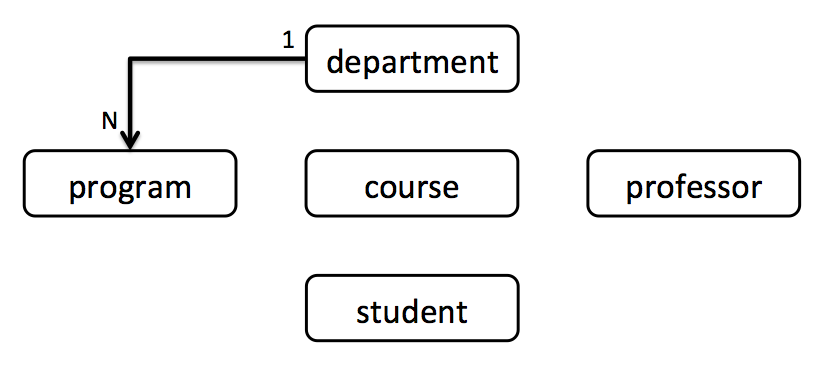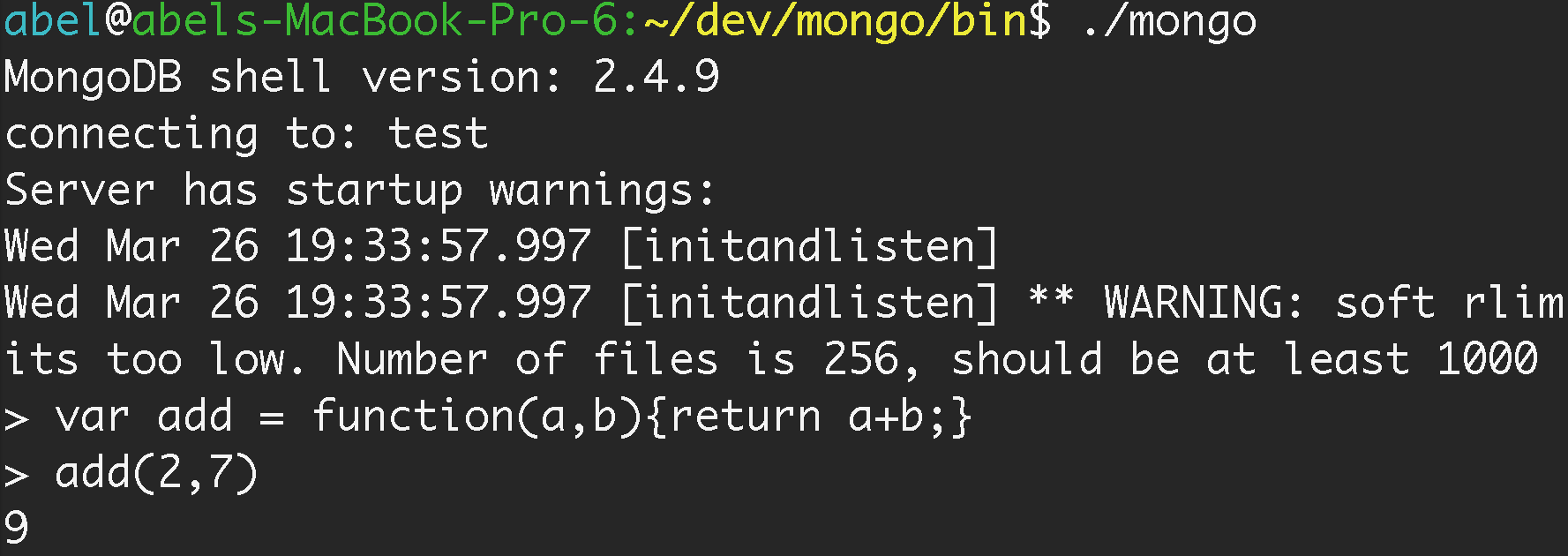Data Stores
Data
Fundamental components of computer programs:
- A way to represent data
- A way to store data
- Instructions to manipulate the data
Data Stores
Stores and manipulates information
Two Types of Data Stores
- Relational: represents all data as tables
- Document: data is thought of as a “document”
Database Design
The database design involves choosing:
- The documents collections (tables)
- The fields/properties (the columns)
- How collections and properties interact
Entity-relationship modeling
E/R Modelling is used for conceptual design
- Entities - objects or things of interest
- Attributes - facts or properties of an entity
- Relationships - links between entities
Entities
Represent objects or things of interest
- Physical things like students, professors, employees
- Abstractions like courses, programs, projects, orders
- Have types like course, professor
- Have instances like courses: calculus, algebra
Entities in Diagrams
Entities are drawn as a box

Attributes
Attributes are facts, properties, or details of an entity.
- Students have IDs, names, courses
- Courses have names, credits, level
Attributes in Diagrams
Represented a few different ways.

Relationships
Relationships are an association between two or more entities.
- A student takes several courses
- A course is taugh by one professor
Cardinality Ratios
An entity can participate in three types of relationships
- One to one (1:1). Each professor has one office
- One to many (1:N). A professor can advice many students
- Many to many (N:N). Each student takes many classes, and each class is taken my many students.
Relationships in Diagrams
Relationships are links between two entities

Removing N:N Relationships
We can split a many to many relationship into two one to many relationships. A new entity represents the N:N relationship.

Entity-relationship modeling
Look at your data and indentify
- Entities
- Attributes
- Relationships
- Cardinality ratios
Example
A university consists of a number of departments. Each department offers several programs. A number of courses make up each program. Students enroll in a particular program and take courses towards the completion of that program. Each course is taught by a professor from the appropriate department, and each professor advices a group of students.
Example - Entities
A university consists of a number of departments. Each department offers several programs. A number of courses make up each program. Students enroll in a particular program and take courses towards the completion of that program. Each course is taught by a professor from the appropriate department, and each professor advices a group of students.
Example - ER Diagram
Entities: department, program, course, professor, student

Active Learning
Complete ER Diagram

Sample ER Diagram

Normalization Rules
- Each row-and-column intersection holds only one value
- Nonkey columns must depend on the entire primary key
- No nonkey column depend on another nonkey column
We will use a document database

Advantages of Document Stores
- Documents are independent units
- Application logic is easier to write
- Unstructured data can be stored easily
Active Learning - Install MongoDB
Submit screenshot of running server

Path Permissions
You may need to set permissions

Bin

Start Server
mongod

Start Client
mongo

JavaScript & MongoDB

Document

Insert
db.users.insert(
{
name :'peter',
email:'peter@mit.du',
age :'18'
}
)
Insert

Collection
Multiple documents make a collection
Collection

Active Learning - Create Collection
Enter a few documents into your collection. When you are done, list them using db.yourCollectionName.find()
Modify Documents
db.collection.update()
db.users.update(
{ email: "peter@mit.edu" },
{
$set: { email: "parker@mit.edu" }
}
)
Modify Multiple Documents
If multi is set to true, all matching documents are updated. Else, only one document is updated.
db.users.update(
{},
{$set: { city: "boston" }},
{ multi: true }
)
Remove Documents
// removes all documents from a collection,
// but does not remove the indexes
db.collection.remove();
// drops the entire collection,
// including the indexes
db.collection.drop();
Remove On Condition
Remove documents in the users collection with email parker@mit.edu
db.users.remove(
{
email : "parker@mit.edu"
}
)
Query Documents
the find method retrieves documents from a collection
db.collection.find()
Select All Documents in a Collection
An empty query document selects all documents in the collection. Not specifying a query document has the same effect.
// empty query document
db.users.find( {} );
// no query document
db.users.find();
Find All
db.users.find()

Specify Condition
db.users.find( { email : "peter@mit.edu" } );
// --- output ---
// { "_id" : ObjectId("123"),
// "name" : "peter",
// "email": "peter@mit.du",
// "age" : "18" }
Query Operators
Use $in to match field values. The statement below matches documents in the users collection where the name field is peter or clark. For more query operators, see http://docs.mongodb.org/
db.users.find( { name : { $in : ['peter','clark'] } } )
// --- output ---
// { "_id" : ObjectId("5d"), "name" : "peter",
// "email" : "peter@mit.du", "age" : "18" }
// { "_id" : ObjectId("57"), "name" : "clark",
// "email" : "clark@mit.du", "age" : "25" }
Query

Bulk Insert
load('yourPath/bulk_insert.js')
Bulk Insert
// load file using - load('yourFile.js')
var data = [
{ name : 'dan', email : 'dan@mit.edu'},
{ name : 'bob', email : 'bob@mit.edu'},
{ name : 'lou', email : 'lou@mit.edu'},
{ name : 'meg', email : 'meg@mit.edu'},
{ name : 'amy', email : 'amy@mit.edu'},
{ name : 'liv', email : 'liv@mit.edu'},
];
var length = data.length;
for (var i = 0; i < length; i++) {
db.students.insert(data[i]);
}
Robomongo

Robomongo Local

Video - MongoDB Install OSX
Video - MongoDB Install Windows
Video - Data Conversions
Components
- JavaScript code on the client
- JavaScript code on the server
- JavaScript code on the DB
- Datasets
- GUI
- Visualization